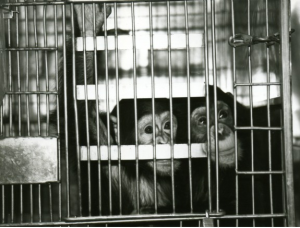Duck Platypus
Fast Facts
Type:
Mammal
Diet:
Carnivore
Size:
Head and body, 15 in (38 cm); Tail, 5 in (13 cm)
Weight:
3 lbs (1.4 kg)
Size relative to a 6-ft (2-m) man:
The platypus is among nature’s most unlikely animals. In fact, the first scientists to examine a specimen believed they were the victims of a hoax. The animal is best described as a hodgepodge of more familiar species: the duck (bill and webbed feet), beaver (tail), and otter (body and fur). Males are also venomous. They have sharp stingers on the heels of their rear feet and can use them to deliver a strong toxic blow to any foe. Platypuses hunt underwater, where they swim gracefully by paddling with their front webbed feet and steering with their hind feet and beaverlike tail. Folds of skin cover their eyes and ears to prevent water from entering, and the nostrils close with a watertight seal. In this posture, a platypus can remain submerged for a minute or two and employ its sensitive bill to find food. These Australian mammals are bottom feeders. They scoop up insects and larvae, shellfish, and worms in their bill along with bits of gravel and mud from the bottom. All this material is stored in cheek pouches and, at the surface, mashed for consumption. Platypuses do not have teeth, so the bits of gravel help them to “chew” their meal. On land, platypuses move a bit more awkwardly. However, the webbing on their feet retracts to expose individual nails and allow the creatures to run. Platypuses use their nails and feet to construct dirt burrows at the water’s edge. Platypus reproduction is nearly unique. It is one of only two mammals (the echidna is the other) that lay eggs. Females seal themselves inside one of the burrow’s chambers to lay their eggs. A mother typically produces one or two eggs and keeps them warm by holding them between her body and her tail. The eggs hatch in about ten days, but platypus infants are the size of lima beans and totally helpless. Females nurse their young for three to four months until the babies can swim on their own.
Test Post
Test post see below
Animal Testing Vs. Animal Rights
 There are 1700 chimpanzees who are still in programs that test infectious diseases, seatbelt tests, etc. They live in small cages usually alone. Given what you know about chimpanzees. Their intelligence, their social natures, there close knit family structure., do you think that animals should be used in testing?
There are 1700 chimpanzees who are still in programs that test infectious diseases, seatbelt tests, etc. They live in small cages usually alone. Given what you know about chimpanzees. Their intelligence, their social natures, there close knit family structure., do you think that animals should be used in testing?
Consider the article we read about Stephen Wise the lawyer who sees them more as living beings as opposed to things. Do they have rights that would preclude them from testing?
Now lets make it interesting. Let us suppose the person you love most in the world is sick. He or she has a sickness that they cannot cure. Would you want them to do testing on Chimpanzees to find a cure for the disease that can save the person you love?

Recent Comments